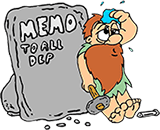
To view this newsletter in different languages — see the web page version
Are we measuring the right things? |
|
What should we measure?There are three popular Lean Six Sigma tools and methods that each answer the (all important) questions: What should we measure (What do our customers care about most?) 1) Measurement Selection Matrix template
Your Measurement Selection Matrix (MeasuresSelect.xlsx) is the fastest, simplest way to answer the question: "What should we measure that our customers care about most?"
See the 7-step online training to learn how to:
See online training for how to use your
2) Cause and Effect Matrix Your Cause and Effect template (CauseEffect.xlsx) is a special type of Pareto Chart that you use to identify the few process input variables
In other words... you use your Cause and Effect template to answer the question:
"Where should we focus our attention?"
See online training for how to use your
3) QFD House of Quality That question... "Where should we focus our attention?" is important. Really important.
The purposes of QFD Quality Functional Deployment are:
Learn more about how to use QFD
 Why re-invent?
|
|
Want Help?In addition to the free training and videos on the Systems2win web site, and the Training and Mentoring available from Systems2win... You can also request an introduction to an affiliated consultant — to help you and your team get the most from your Systems2win tools — perhaps a consultant near you, or specializing in your industry, or who speaks your language...
|
|
New User TrainingWhenever you need to train a new team member how to use those features that are common to most of your 150+ Systems2win templates... Each user has 2 choices: 1) Self-paced learning exercises 2) Attend a free live webinar
Free Live Instructor Led Class This Wed, June 21, 9am Central Time In depth training, and hands-on learning exercises for (licensed) new users
All times are Central Time from Nashville Tennessee, (which is the same as Chicago)
|
|
so they too can

You already knew about Systems2win? Why didn't you tell me?
|
|



|
You are receiving this newsletter either because you are a customer,
or because you subscribed when you visited
Systems2win.com.
In compliance with CAN-SPAM, we will immediately honor any request to unsubscribe.






